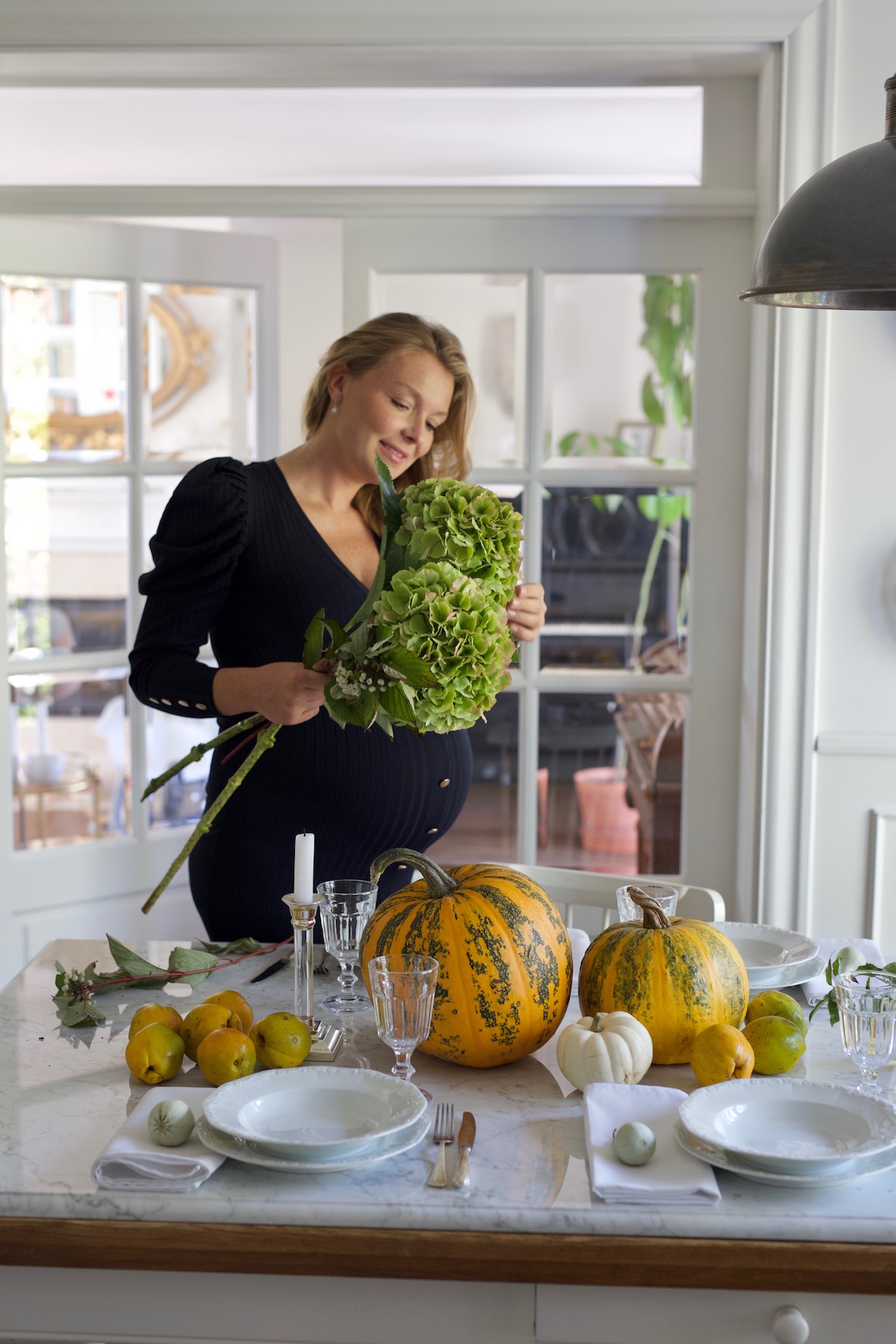 There’s something sentimental in the Sunday ritual of laying the table. It allows me to return with my thoughts to my childhood. I liked the moment when my parents invited guests to the family dinner very much as the whole situation would always turn into a very cheerful and tasty time. The feeling that there are school duties to face in a few hours’ time disappeared somehow as I was able to spend some time listening to adults’ conversations. Listening to conversations about travelling and thinking about my future family and the privilege to have my guests around the house. When it comes to that, my ideas were pretty close to reality as nothing gives me more happiness than meetings by the table with my nearest and dearest and eating food that we are proud of because we’ve put our hearts into it.
There’s something sentimental in the Sunday ritual of laying the table. It allows me to return with my thoughts to my childhood. I liked the moment when my parents invited guests to the family dinner very much as the whole situation would always turn into a very cheerful and tasty time. The feeling that there are school duties to face in a few hours’ time disappeared somehow as I was able to spend some time listening to adults’ conversations. Listening to conversations about travelling and thinking about my future family and the privilege to have my guests around the house. When it comes to that, my ideas were pretty close to reality as nothing gives me more happiness than meetings by the table with my nearest and dearest and eating food that we are proud of because we’ve put our hearts into it.
The last days of waiting fuel my impatience (unfortunately, I’m soo impatient by nature!), but a few experiences over the course of the last years made my appreciation even bigger and I’m more thankful for what we’ve been able to achieve together…
In the meantime, check out the today’s recipe that is difficult to resist!
* * *
Przy niedzielnym rytuale nakrywania do stołu jest coś sentymentalnego, co pozwala mi na chwilę powrócić do okresu dzieciństwa. Bardzo lubiłam ten moment, gdy rodzice zapraszali dodatkowych gości a rodzinny obiad przekształcał się w radosny i smakowity czas. Poczucie, że za parę godzin czekają szkolne obowiązki nagle się ulatniało, bo mogłam spędzić czas przy ciekawych rozmowach z dorosłymi. Wsłuchiwać się w opowiadania o podróżach i zastanawiać się, jak to będzie, gdy ja będę już miała swoją rodzinę i przywilej podejmowania swoich gości. W tej kwestii moje wyobrażenia pokryły się z rzeczywistością, bo nic tak mnie cieszy, jak wspólne spotkania przy stole, przy jedzeniu z którego jesteśmy dumni, bo jest w nim nasze serce.
Te ostatnie dni oczekiwania podsycają moją niecierpliwość (niestety z natury jestem wyjątkowym niecierpliwcem!) ale parę doświadczeń na przestrzeni ostatnich lat sprawiło, że moja wdzięczność jest jeszcze większa i bardziej doceniam to, co nam się wspólnie udało osiągnąć…
Tymczasem dzisiaj zapraszam Was na jeden z tych jesiennych przepisów, któremu trudno było mi się oprzeć!
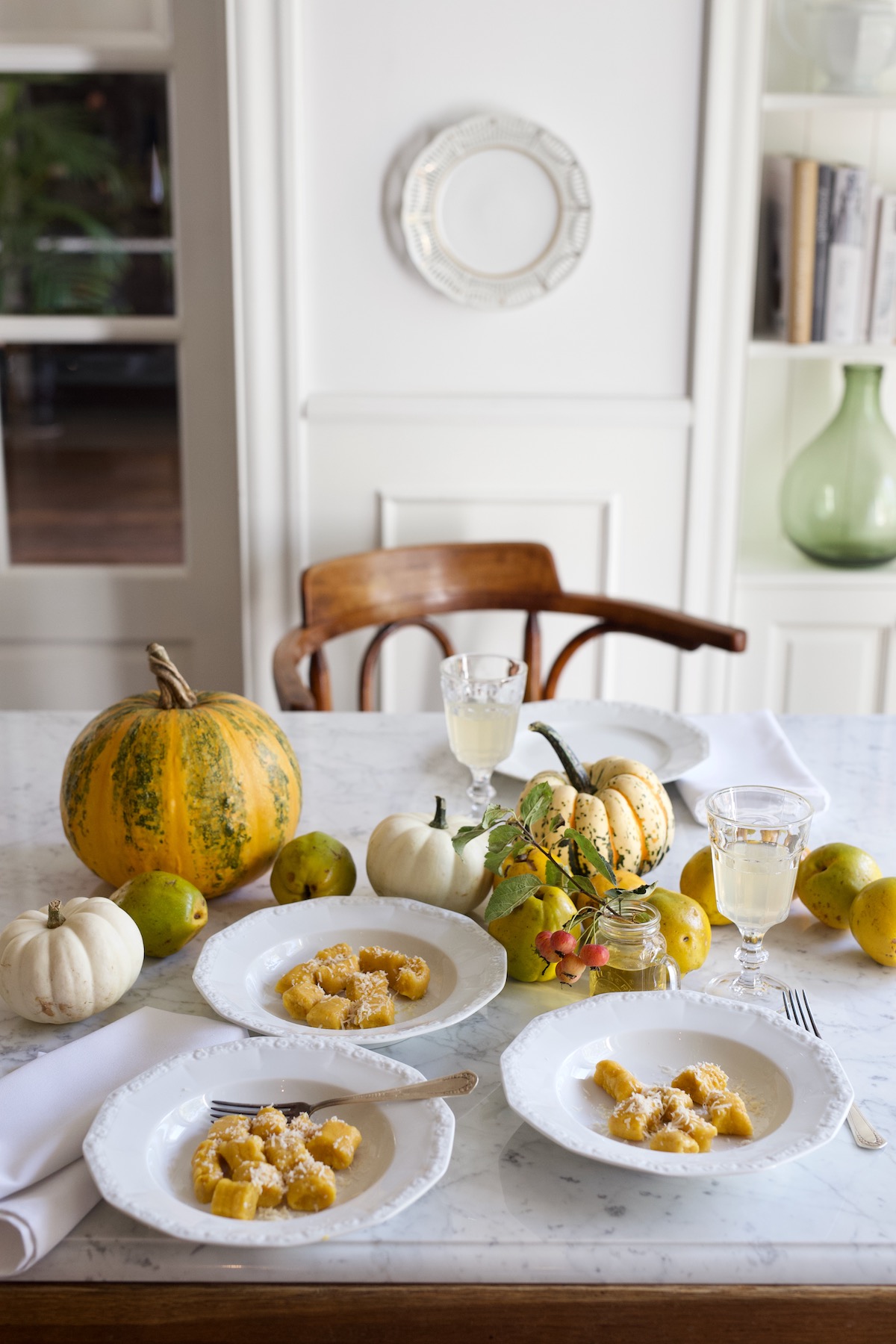 Ingredients:
Ingredients:
(recipe for 4-6 portions)
approx. 400 g of baked pumpkin (it’s best to use Hokkaido)
300 g cooked potatoes
1 egg
80 g of butter
100 g of grated Parmesan cheese
400 g of wheat flour + some for sprinkling
1 teaspoon of grated nutmeg (I recommend adding a little bit more)
sea salt
served with:
2-3 tablespoons of dried sage + 150g of butter + a handful of parmesan
* * *
Skład:
(przepis dla 4-6 osób)
ok. 400 g upieczonej dyni (najlepiej hokkaido)
300 g ugotowanych ziemniaków
1 jajko
80 g masła
100 g tartego parmezanu
400 g mąki pszennej + do podsypania
1 łyżeczka mielonej gałki muszkatołowej (polecam trochę więcej)
sól morska
do podania:
2-3 łyżki suszonej szałwii + 150 g masła + garść parmezanu
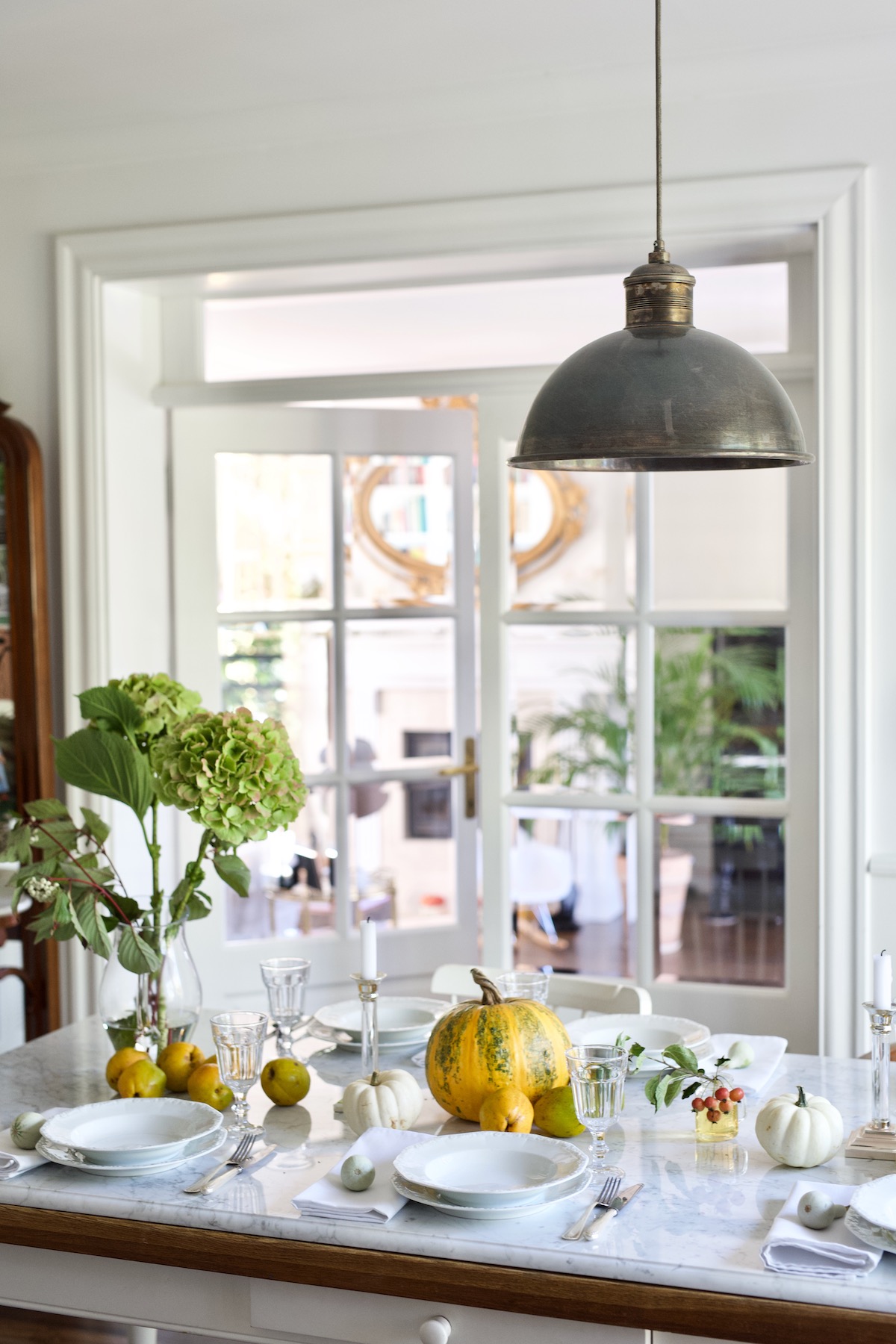
Directions:
1. Spread the washed and cut pumpkin on the baking tray (remove the stones). Sprinkle it with olive oil and bake in the oven preheated to 200ºC for 15-18 minutes or until it becomes soft. Take it out of the oven – remove the skin and blend the pumpkin to a puree.
2. In a wide dish, combine flour, egg, pumpkin puree, potato puree, nutmeg, grated parmesan, and melted butter. Mix everything until smooth. Season everything with sea salt. Form an orange-sized ball and coat it in the flour on the pastry board and form a roll. Use a knife to cut 2-centimetre wide pieces and press them with a fork, rolling them with your finger at the same time. Then, you’ll receive the characteristic pattern which allows the sage butter to cover gnocchi better. Cook the ready gnocchi in boiling and salted water – for around 1 minute after they emerge.
3. In a small pot, melt butter with sage. Served the cooked gnocchi with hot sage butter and grated parmesan.
* * *
A oto jak to zrobić:
1. Umytą i pokrojoną dynię rozkładamy na blasze (usuwamy pestki). Skrapiamy oliwą i pieczemy w rozgrzanym piekarniku w temperaturze 200 stopni C przez 15-18 minut lub do momentu, aż będzie miękka. Wyjmujemy z piekarnika – usuwamy skórkę i blendujemy na puree.
2. W szerokim naczyniu łączymy mąkę, jajko, puree z dyni, puree z ziemniaków, gałkę muszkatołową, tarty parmezan i rozpuszczone masło. Całość mieszamy do uzyskania jednolitej konsystencji. Doprawiamy solą. Z ciasta formujemy kulę w wielkości pomarańczy, obtaczamy w rozsypanej na stolnicy mącę i rolujemy wałek. Nożem odcinamy kluski około 2 cm szerokości i odznaczamy widelcem, dociskając kciukiem lekko rolując. Wówczas powstanie charakterystyczny wzór, który sprawia, że masło szałwiowe lepiej je oblepi. Gotowe gnocchi gotujemy we wrzącej i osolonej wodzie – od momentu wypłynięcia około 1 minutę.
3. W małym garnuszku rozpuszczamy masło z szałwią. Ugotowane gnocchi podajemy z gorącym masłem szałwiowym i ewentualnie tartym parmezanem.
 Hokkaido pumpkin is the colour of dark orange and the pulp is slightly golden – owing to its sweetness, it is most often recommended for soups, pastas, casseroles, and pastries. It’s rather soft in comparison to other pumpkin types.
Hokkaido pumpkin is the colour of dark orange and the pulp is slightly golden – owing to its sweetness, it is most often recommended for soups, pastas, casseroles, and pastries. It’s rather soft in comparison to other pumpkin types.
Dynia hokkaido jest ciemnopomarańczowa, a miąższ złotawy – ze względu na swoją słodycz najczęściej polecana jest do zup, makaronów, zapiekanek i ciast. Jest dość miękka w porównaniu do pozostałych odmian dyni.
 In a wide dish, combine flour, egg, pumpkin puree, potato puree, nutmeg, grated parmesan, and melted butter. Mix everything until smooth. Season everything with sea salt.
In a wide dish, combine flour, egg, pumpkin puree, potato puree, nutmeg, grated parmesan, and melted butter. Mix everything until smooth. Season everything with sea salt.
W szerokim naczyniu łączymy mąkę, jajko, puree z dyni, puree z ziemniaków, gałkę muszkatołową, tarty parmezan i rozpuszczone masło. Całość mieszamy do uzyskania jednolitej konsystencji. Doprawiamy solą.
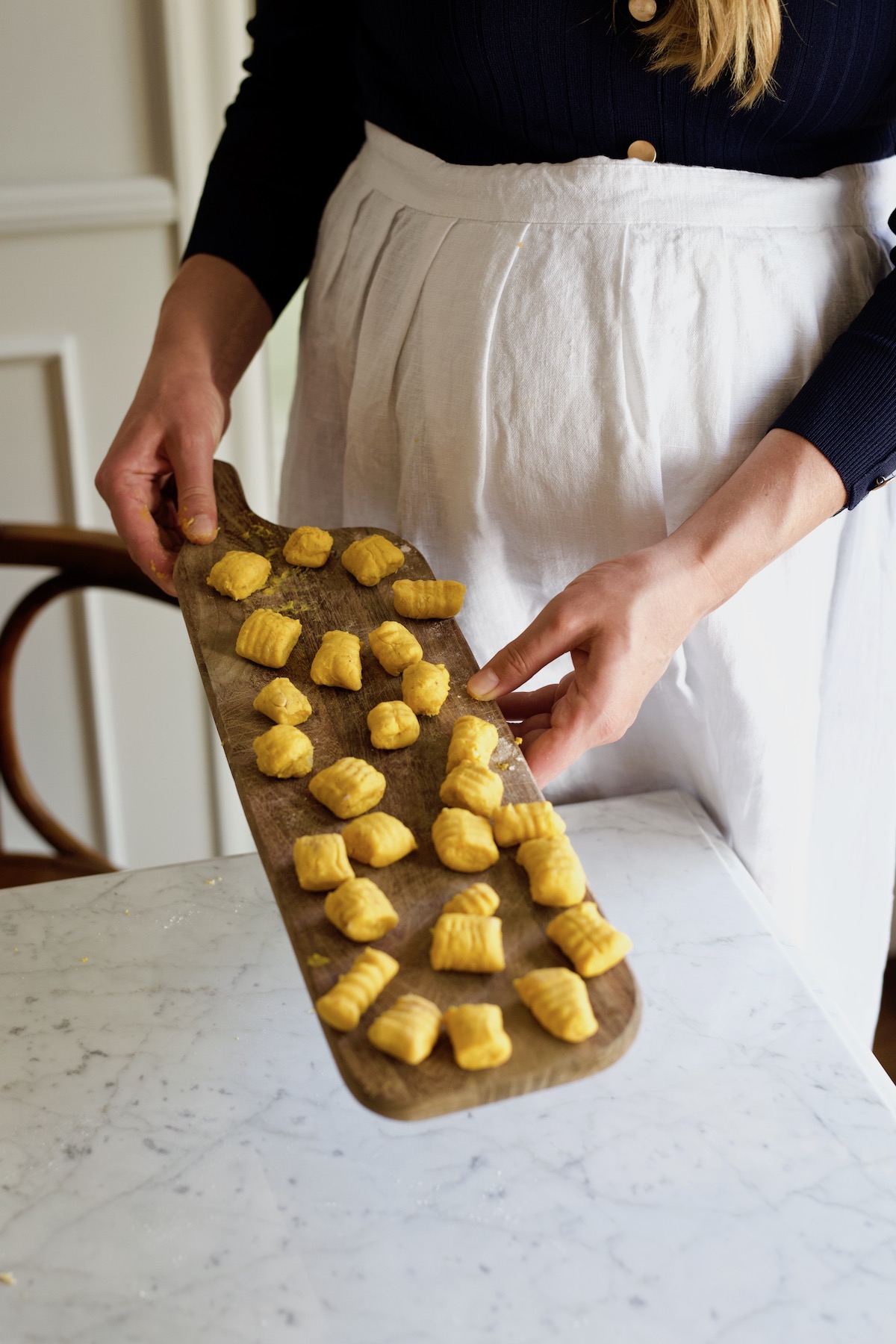 Form an orange-sized ball and coat it in the flour on the pastry board and form a roll.
Form an orange-sized ball and coat it in the flour on the pastry board and form a roll.
Z ciasta formujemy kulę w wielkości pomarańczy, obtaczamy w rozsypanej na stolnicy mącę i rolujemy wałek.
 Use a knife to cut 2-centimetre wide pieces and press them with a fork, rolling them with your finger at the same time. Then, you’ll receive the characteristic pattern which allows the sage butter to better cover gnocchi. Served the cooked gnocchi with hot sage butter and grated parmesan.
Use a knife to cut 2-centimetre wide pieces and press them with a fork, rolling them with your finger at the same time. Then, you’ll receive the characteristic pattern which allows the sage butter to better cover gnocchi. Served the cooked gnocchi with hot sage butter and grated parmesan.
Nożem odcinamy kluski około 2 cm szerokości i odznaczamy widelcem, dociskając kciukiem lekko rolując. Wówczas powstanie charakterystyczny wzór, który sprawia, że masło szałwiowe lepiej je oblepi. Ugotowane gnocchi podajemy z gorącym masłem szałwiowym i ewentualnie tartym parmezanem.








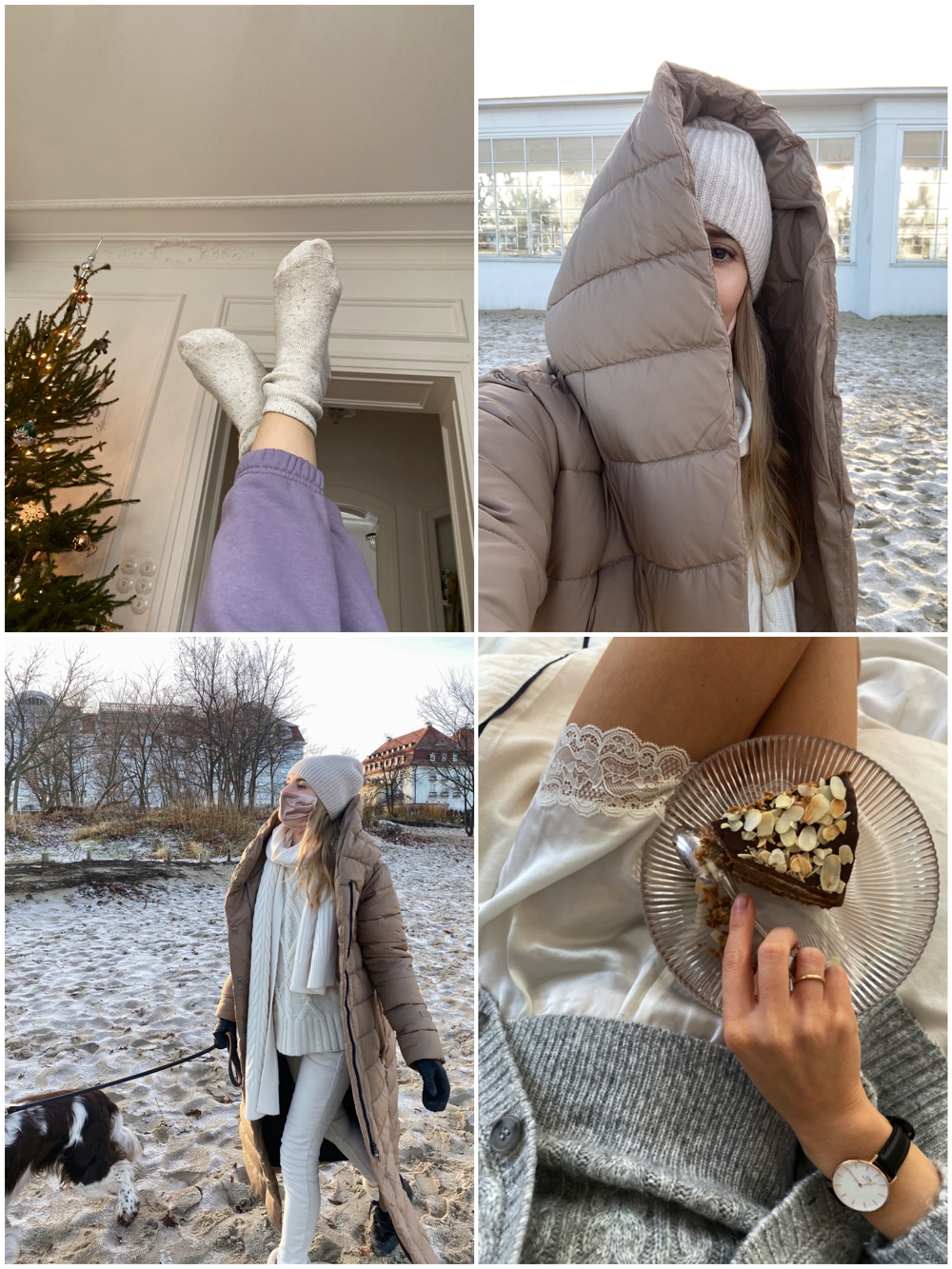

Komentarze